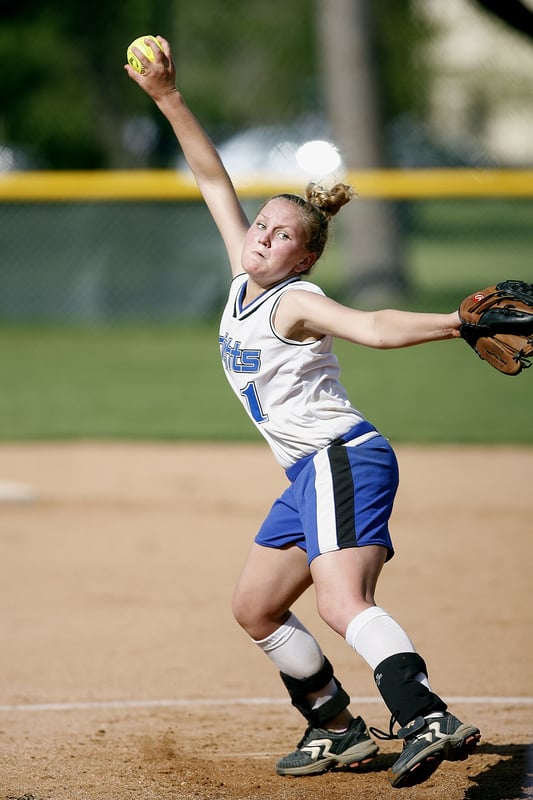
With the media and our culture’s fascination with baseball pitching velocity and mammoth home runs, the sport of softball has taken a back seat. Yet the activity exists as one of the most powerful sports, certainly rotationally, and its injuries can teach us a lot about the human body. A 2009 study out of the Rush Medical Center researched the most common injury among softball pitchers, who throw underhand in a motion known as a windmill pitch. The finding was biceps tendonitis, a pain in the groove at the front of the shoulder. This point is where the tendon of the muscle slides through. But what is applicable to all sports, is this injury occurs due to a very unique situation called active insufficiency.
Active insufficiency is the inability of a muscle, which spans two or more joints, to create enough tension because it is already shortened. An example is if you flex your wrist and try to make a fist, versus making that fist without flexing the wrist at all.
During the underhand motion of throwing a softball, the biceps is under the greatest stress at the finishing portion of the pitch, which makes sense considering the more abrupt finish compared to the elongated deceleration of baseball pitchers from a higher pitching mound. But the explanation also has to do with active insufficiency as the biceps attempt to function at 3 joints; the shoulder, the elbow, and forearm joint (radio-ulnar).
As the arm is accelerated forward, the bicep is shortening at the shoulder joint and elbow to flex the arm forward, but the arm is also eccentrically loaded at the radio-ulnar joint as a supinator as the forearm pronates to create more spin of the ball, a characteristic produced by all elite pitchers.
The key to preventing this injury is still the lower body, as absorbing this sudden stop is a critical function of the highest recorded muscle activation at release, the gluteal group. One of the best exercises is single leg deadlift, which also incorporates active insufficiency.
Because the knee is kept bent (flexed), the hamstrings contribution to hip extension is decreased, leaving the other hip extensors, the gluteal group, to take over. Years of ACL research also show females struggle with keeping their knees bent during impact absorption so this movement also trains females to use the posterior chain muscles (gluteals, hamstrings) instead of their quadriceps (see Sparta Point).
You don’t have to be a softball player to integrate active insufficiency into your training; more importantly we should know that all injuries, even the biceps, start from the ground up!